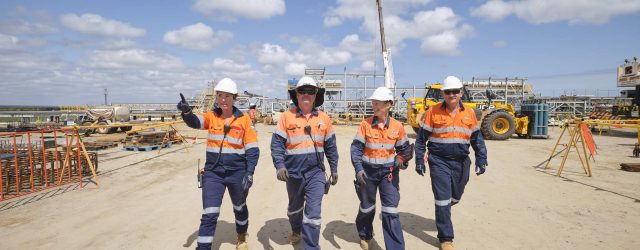Tiers no more—simple solutions to the problems of a complex system
Posted: 12th October 2021
Posted in: Blog

Posted: 12th October 2021
Posted in: Blog
This week, Infrastructure Australia will launch their inaugural Infrastructure Market Capacity Report. It will likely raise concerns about the ability of industry to deliver the record level of investment in the construction of new infrastructure due to potential shortages of labour, plant, and materials. If true, this could be a big problem as all levels of government are relying on this investment to lead the nation’s economic recovery on the basis that every $1 spent on new infrastructure has a $3 kick on to the wider economy.
Tiers
It has been suggested by some that one way to address this problem of shortages is to break up large projects into smaller packages of work that can be undertaken by ‘Tier 2’ and ‘Tier 3’ contractors. This assumes there is some magical pool of resources sat waiting to be tapped.
As anyone who has tried to get some home renovation or repair works done recently will tell you, there are currently very few tradies sitting at home waiting for the phone to ring!
Whilst no definition has ever been agreed, the tier system has been used to describe different sizes of contractors based largely on the revenue they generate. It does not take into account important things like whether the revenue generates profit, how much profit is invested in Australian training and innovation, the diversity within the business, and the resources and technical expertise that it can call upon.
In short, a focus on giving more or less work to different tiers will not help address the fundamental problems of the construction industry that are impacting on its ability to undertake the pipeline of work ahead of it, such as poor profitability, lack of diversity within the workforce, low productivity growth and a high rate of worker suicide.
Complex system
The construction industry operates as a complex system that is not easily capable of being broken down and categorised. Projects are essentially built by many interconnected teams of people fed by long supply chains that are ultimately managed by contractors. It therefore stands to reason that in order to improve project outcomes, there needs to be a focus on optimising the system as a whole and not just one component.
As a model client, there are a number of simple actions governments could take that would lead to cascading improvements throughout the whole complex system of the construction industry.
Procure based on best value for money
Governments should award projects based on assessment of best value for money rather than just lowest cost at the tender box, as the two are rarely the same thing. Among other things, a focus on value for money could result in additional local content, reduced environmental impact, increased use of social and indigenous enterprise, innovation and improved productivity, reduced life cycle costs and increased industry diversity.
The Construction Industry Leadership Forum is currently working on developing a framework that will help infrastructure clients better define and achieve value for money through the procurement process.
Create sustainable win-win contracting arrangements
Ensuring positive outcomes in a complex system can’t be achieved through a contract alone, because a contract presumes you can know everything in advance, plan for it and allocate all the risks effectively. Use of more collaborative contracting arrangements, however, can align the interests of the parties to what is best for the project—resolving problems as they occur to achieve mutually beneficial outcomes rather than for the benefit of one party over another. They also facilitate greater engagement and earlier involvement of the supply change to identify potential issues and drive innovation.
Adoption of a culture standard
The Cost of Doing Nothing Report published by BIS Oxford Economics, estimated that a poor culture in the construction industry is costing the economy over $8 billion every year.
Guided by academic research, the Construction Industry Culture Taskforce is developing an industry culture standard to improve industry culture by detailing measures that if adopted will improve time for life, wellbeing, diversity and inclusion.
Once finalised, governments should look to incorporate compliance with the Culture Standard into their standard procurement requirements.
The time for action is now
Capability and capacity constraints represent a real risk to the delivery of the record pipeline of infrastructure projects that the government is relying on to lead the economy forward but seeking to reallocate work from one undefined tier to another is not the answer.
There are some simple actions that can be taken that will lubricate the various moving parts of the industry as a whole, improve its efficiency, increase the benefits to the economy and allow more to be done with less… but the time for action is now!